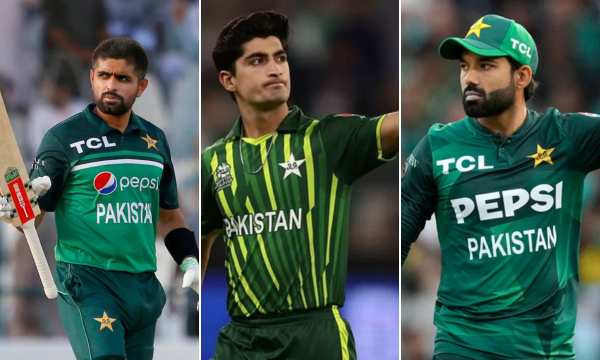Pakistan Cricket Team: Legends, Records, and Unique Facts
The Pakistan Cricket Team fascinates fans globally with its unpredictable style and talented players who defy expectations.
Ad
Known as “The Greens”, this team has transformed the sport with innovative techniques and remarkable personalities.
Every match becomes a spectacle of pure emotion, where the unthinkable frequently happens.
For cricket enthusiasts, the journey of the Pakistan Cricket Team represents more than just a sport – it is an emotional rollercoaster that connects generations.
The Early Years of the Pakistani Team
The Pakistan Cricket Team was officially born in 1952, five years after the country’s independence, playing its first Test match against India.
These early decades were crucial in laying the foundations for what would become a powerhouse in world cricket.
The team faced significant initial challenges, including limited infrastructure and lack of international experience.
The first national heroes emerged during this period, such as Fazal Mahmood, whose performance against England in 1954 resulted in the team’s first Test victory.
This historic achievement elevated the morale of the young nation and planted the seeds of passion for the sport that persist to this day.
During the 1960s and 70s, the Pakistan Cricket Team began to develop its own identity in world cricket.
The team became known for producing fast bowlers and technically refined batsmen, characteristics that define the Pakistani style to this day.
Players like Hanif Mohammad, known as “The Little Master,” set impressive records, including an incredible innings of 337 runs against the West Indies.
Players Who Made History for the Team
The Pakistan Cricket Team built its reputation through legendary players whose extraordinary talents elevated the sport to new heights.
Imran Khan, perhaps the most iconic name, revolutionized Pakistani leadership with his combination of athletic skill and strategic intelligence.
His captaincy culminated in the historic 1992 World Cup victory, a defining moment for Pakistani cricket.
Javed Miandad personified the team’s fierce competitive spirit, being remembered for the famous last-ball six against India in Sharjah.
Wasim Akram and Waqar Younis formed the most feared bowling duo of the 90s, dominating opponents with high-speed swing and precise yorkers.
The tradition continued with Inzamam-ul-Haq, whose elegance at the crease contrasted with his robust figure, becoming one of the country’s greatest batsmen.
Saqlain Mushtaq revolutionized spin bowling with his invention of the “doosra”, while Younis Khan and Mohammad Yousuf set batting records that remain to this day.
The Pakistani team has always had a knack for producing exceptional talent seemingly out of nowhere.
Players like Shoaib Akhtar, “The Rawalpindi Express”, brought sheer excitement to the game with speeds exceeding 160 km/h.
Notable Achievements of the Pakistan Cricket Team
The most emblematic victory came in 1992 when Imran Khan led an underdog team to glory in the World Cup.
That triumph was not just a sporting achievement but a moment of unparalleled national unity.
In 2009, the team overcame all obstacles to win the T20 World Cup, demonstrating remarkable resilience after difficult years.
The team also reached the top of the ICC Test rankings in 2016, confirming their excellence in the longest format of the game.
The Pakistanis have set impressive records on foreign soil, including winning series against England and Australia when few believed it possible.
Particularly in the United Arab Emirates, which became their adopted home, the Pakistan Cricket Team developed a formidable fortress.
The 2017 Champions Trophy victory against favorites India represents another golden page in the team’s history. Starting the tournament as underdogs, the Pakistanis defeated elite opponents to claim the trophy.

2017-Champions-Trophy-(Source-Google)
Outstanding Individual Records
Regarding extraordinary individual performances, the Pakistani team has broken records that challenge the sport’s history.
Hanif Mohammad set a record by scoring 337 runs against the West Indies in 1958, staying at the crease for 16 hours.
This feat demonstrated the determination that would characterize generations of Pakistani players.
Fazal Mahmood revolutionized Pakistani bowling with impressive figures of 12 wickets for 99 runs against England in 1954.
Wasim Akram remains the Pakistan Cricket Team’s record wicket-taker in ODIs, with 502 dismissals that include memorable hat tricks and decisive finals.
Saeed Anwar scored an impressive 194 against India in 1997, setting an ODI record that lasted for years.
Younis Khan, with 10,099 Test runs, remains the highest run-scorer in Pakistan’s history, demonstrating impeccable technique in all conditions.
The legendary Shoaib Akhtar recorded the fastest ball in cricket history at 161.3 km/h, a feat that reflects the club’s tradition of producing truly fast bowlers.
Reverse Swing: A Pakistani Specialty
A technique that has become synonymous with Pakistani bowling is reverse swing.
This formidable skill, which makes the ball move in the opposite direction to what is expected at the end of its trajectory, confuses even the most experienced batsmen.
Pioneers Sarfraz Nawaz and Imran Khan developed this technique in the 70s, but it was Wasim Akram and Waqar Younis who elevated it to artistic levels.
The arid conditions of the subcontinent, which quickly wear out the ball, inadvertently contributed to this specialization.
Pakistan Cricket Team players learned to manipulate the worn ball with scientific precision, creating devastating movement on seemingly dead pitches.
This adaptation to adverse circumstances perfectly reflects the resilience that defines the team.
The legacy continues through generations, with Mohammad Asif demonstrating surgical control and Shoaib Akhtar combining swing with terrifying speed.
Today, players like Shaheen Afridi embody this tradition, adding their own interpretations to the ancient art. Reverse swing not only took wickets but also earned global admiration.
Coaches and analysts frequently study videos of Wasim and Waqar to understand the secrets of this distinctly Pakistani technique.
Current Team Composition: Main Squad Analysis
The current Pakistan Cricket Team represents a fascinating mix of veteran experience and promising young talent.
Babar Azam, considered among the best technical batsmen today, leads the team with elegance and impressive consistency.
His classic batting style complemented by modern skills sets the standard for the rest of the squad.
Bowling strength remains a defining characteristic of Pakistan, with Shaheen Shah Afridi emerging as the attack leader.
His ability to produce swing with the new ball evokes memories of great bowlers from the past.
Naseem Shah and Haris Rauf add pure speed, while Shadab Khan offers versatile spin options.
In the batting department, Mohammad Rizwan has evolved from a reliable wicketkeeper to one of the most adaptable batsmen in modern cricket.
Fakhar Zaman brings robust power at the top, while players like Abdullah Shafique represent the next generation of refined technicians.
The Pakistan Cricket Team continues to face characteristic form fluctuations but maintains a unique ability to produce inspiring performances when least expected.
Consistency remains the main challenge, especially in foreign conditions, but the raw talent is undeniable.

Azam-Shah-and-Rizwan-(Source-Google)
Distinctive Facts and Historical Curiosities
In 1996, coach Javed Miandad released a snake during a training session to test players’ temperament, creating an unforgettable anecdote in cricket folklore.
This unpredictability is constantly reflected on and off the field. The legendary 1987 Test against England ended in a tie, with both teams scoring exactly 77 runs in the last innings.
The Pakistan Cricket Team features one of the most-watched rivalries in the sport – clashes against India regularly attract over a billion global viewers.
Inzamam-ul-Haq, despite his robust figure, surprisingly held the record for the most run-outs in cricket history for years.
Pakistan produced the youngest international Test player (Hasan Raza at 14) and one of the oldest (Misbah-ul-Haq captaining at 42).
The team has a tradition of revealing talent in unlikely circumstances – Wasim Akram was discovered in a public talent camp, while others emerged playing street cricket with tape balls.
The Pakistani team is the only one to win Test series against England, Australia, and India on their home turf.
Talent Development and Upcoming Challenges
The recently restructured domestic framework aims to create a more consistent pipeline of players prepared for international cricket.
The current system focuses on six strong provincial teams, replacing the old fragmented model.
The national cricket academy in Lahore serves as a center of excellence, equipping young players with advanced technical and psychological resources.
The Pakistan Cricket Team now invests significantly in data analysis and sports science, areas where it traditionally lagged behind rivals like England and Australia.
The steady return of international cricket to the country represents a fundamental breakthrough for development.
Young players can now experience the atmosphere of packed stadiums at home, a crucial element previously absent due to security issues.
Persistent challenges include consistency in foreign conditions and adaptation to the increasing demands of global franchise cricket.
The Pakistan Cricket Team needs to find balance across formats, ensuring that promising talents are not exclusively drawn to the financial lure of T20.
Final Considerations
The Pakistan Cricket Team remains one of the most fascinating and unpredictable forces in the world of cricket.
The unique ability to produce exceptional talent and overcome adversity has defined this team for generations.
The Pakistan Cricket Team’s contribution to the sport transcends wins and losses.
Their revolution in reverse swing, unorthodox approach, and charismatic personalities have immensely enriched world cricket.
For millions of fans, the Pakistani team represents much more than a sports team – it is a symbol of national passion, resilience, and the ability to turn dreams into reality against all odds.
The next generation of players carries this rich heritage, ready to add their own chapters to the ever-evolving legend of the “Green Warriors“.
FAQ
Where does the Pakistan Cricket Team play their home matches?
What makes the Pakistan Cricket Team so unpredictable compared to other teams?
Who is considered the greatest captain in the history of the Pakistan Cricket Team?
What is the greatest achievement of the Pakistan Cricket Team in recent history?
What are the main rivalries of the Pakistan Cricket Team besides India?
 Want to Watch Live Cricket on Your Phone? Check Out the Best Apps
Want to Watch Live Cricket on Your Phone? Check Out the Best Apps
Watching live cricket on the go has never been easier. Ad With stronger networks and smarter streaming, fans now have reliable options to follow every matches […]
Keep reading Essential Apps and Tips for Building a Winning Fantasy Cricket Team
Essential Apps and Tips for Building a Winning Fantasy Cricket Team
Building a reliable fantasy cricket team is easier when you combine match awareness, disciplined strategy, and the right tools. Ad In the past month, the fantasy […]
Keep reading Cricket Tips: How to Get Started, Equipment, and Basic Shots
Cricket Tips: How to Get Started, Equipment, and Basic Shots
Cricket might look complex at first glance, yet its charm lies in teamwork, strategy, and the thrill of every delivery. Ad In today’s article, you’ll find […]
Keep reading